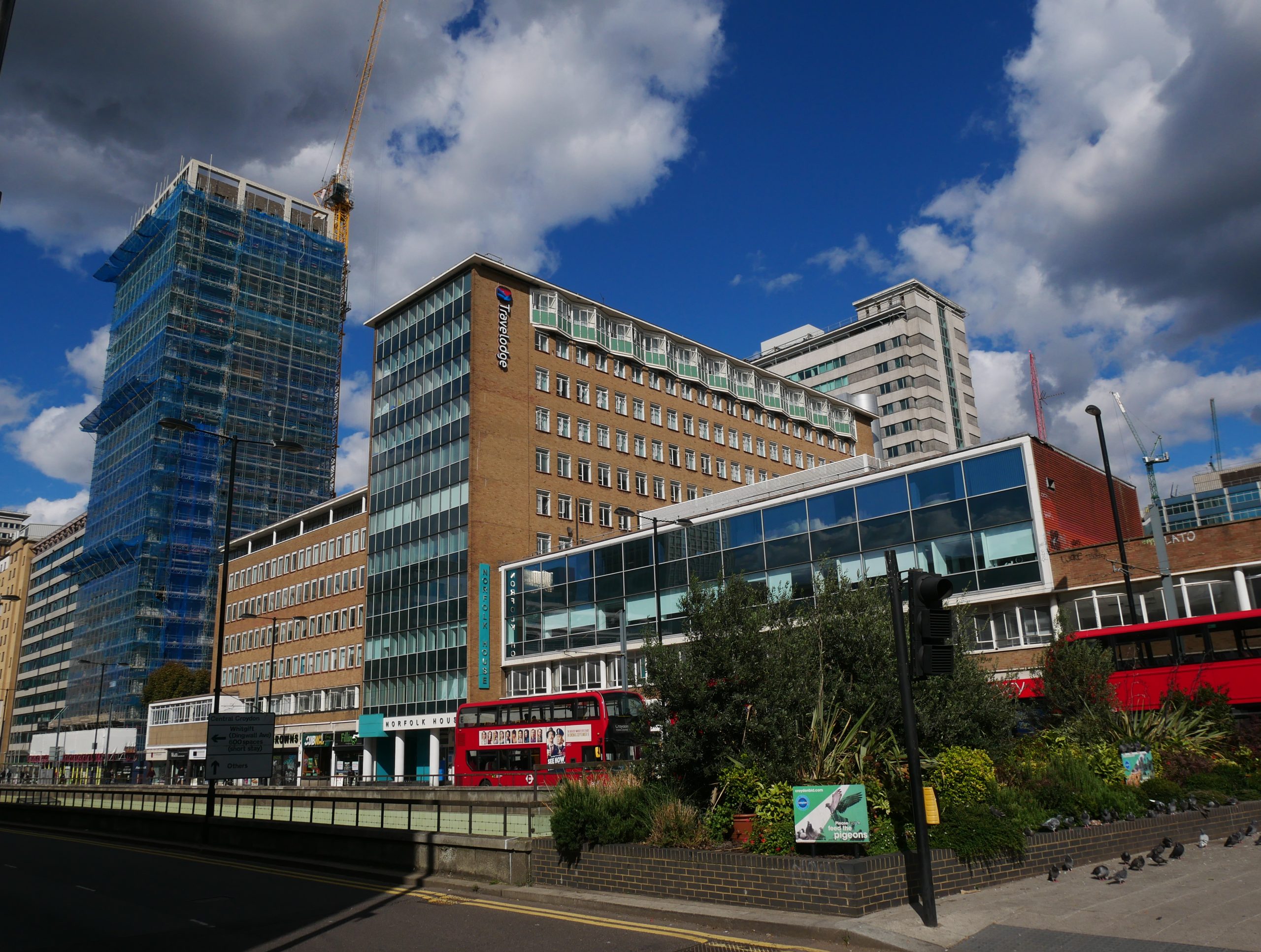London must look to Paris and Auckland as examples of swapping tower blocks for mid-rise buildings in order to solve the capital’s housing crisis, the Mayor has been told.
The capital cities of France and New Zealand make use of mid-rise developments – buildings between five and nine storeys – to maximise density, as opposed to a mix of single-storey houses and high-rise tower blocks.
In 2021, 88.3 per cent of London’s homes were in low-rise buildings – houses, bungalows, or flats in two to five-storey buildings – compared to 41 per cent in Paris, 48 per cent in New York and 62 per cent in Tokyo.
With ministers demanding London build 88,000 homes a year as part of a wider aim of building 1.5million new dwellings by 2029, the London Assembly Planning and Regeneration Committee explored whether London should target mid-rise developments to meet the target.
Nicholas Boys Smith MBE, Founder and Director of the Create Streets think tank, held up Paris as a prime example of the benefits of prioritising mid-rise building.
Their local strategy, called Le Plan local d’urbanisme (PLU), limits new building heights to 37 metres and restricts where high-rises can be built. This has led to a unique layout of tightly packed, mid-rise blocks across the city.
“Paris is building mid-rise housing of quite astonishing quality,” he told the London Assembly. “Part of this is about transport – it is easier and cheaper to build trams. These trams lead to new suburbs and neighbourhoods being created and justifies a greater density of building.”
Russell Curtis, who chairs the Barnet Quality Review Panel, said Auckland Council’s recent move to “compel densification” around train stations has had a “profound effect on rents and house prices” in the city.
Auckland Council recently voted in favour of a housing intensification replacement plan that will see 10-15 storey buildings constructed around public transport hubs. While higher than a typical mid-rise, Mr Curtis said the principle was encouraging.
“In London, if you increased housing density by 25 per cent in areas within 800 metres from a station, you would deliver 850,000 homes,” he said.
“Even a modest increase in density in these areas would yield a significant numbers of homes.”
 The Wellesley Road thoroughfare splits East and West Croydon Credit: Doyle Of London
The Wellesley Road thoroughfare splits East and West Croydon Credit: Doyle Of London
Closer to home, Croydon was held up as a microcosmic example of what can be achieved. A densification programme of 2,000 homes delivered within developments of fewer than 10 homes, with house prices and rents levelling off as a result.
Mr Curtis added: “Developers were given absolute certainty and they build out as a result. If you allowed this sort of principle – for example, automatic replacement of corner plots – across London, you would get to a good level of densification.
Maurice Lange, an analyst at the Centre for Cities, said the need to prioritise mid-rises over low density buildings was becoming more urgent, especially around transport hubs.
“London is less dense than its equivalent megacity peers across the world. Its core is half as dense as the core in Paris, its suburbs are less dense than in Japan,” he told the committee.
“There are definitely some places you want more mid-rises to be happening – around train stations, for example.”
The capital has seen a number of increasingly tall tower blocks built as local officials scramble to meet housing targets.
However, the desperation to build is taking away from London’s architectural beauty and community building, according to the panellists.
Mr Boys Smith said: “There are advantages to both low and high density – mid-rises is a good way to allow people to live in households where they have control over their immediate environment but live in a neighbourhood which is dense enough to have a shop down the road, pub round the corner, walkable to the nearest bus or metro station.
“The concept of mid-rise, while not right for everyone all the time, is a very good way of meeting the different tensions of how we want to live and how we build sustainably and get the conglomeration effects of towns and cities. As a way to growing sustainably and beautifully, it is a key part of the answer.”
Shreya Nanda, an advisor to London YIMBY, which campaigns for more housebuilding in the capital, said planning officials must look to building mid-rise blocks as a “base expectation”.
She added: “Adding more homes is good for affordability. We need to make it affordable for young people and families to stay in London. Mid-rise housing and densifying low-rise housing is what we should be aiming for.”
The current London Plan, drawn up in 2017, does not include a specific policy on mid-rise blocks.
Committee Chair James Small-Edwards asked the Mayor earlier this month whether the new one, due in 2027, will change that.
In a written answer to the London Assembly, Sir Sadiq said: “My Towards a New London Plan consultation document recognises that much of London is fairly low-rise when compared to many other world cities where mid-rise development of five to nine storeys is more common.
“As part of developing my next London Plan, my officers are exploring how mid-rise development can be encouraged across London. This will be a key part to my ambition to optimise the use of land and deliver the housing London needs in a sustainable way.”
📩

Get the latest breaking news, roadworks, crime updates and local events straight to your inbox – totally free, every day.
SIGN UP below
